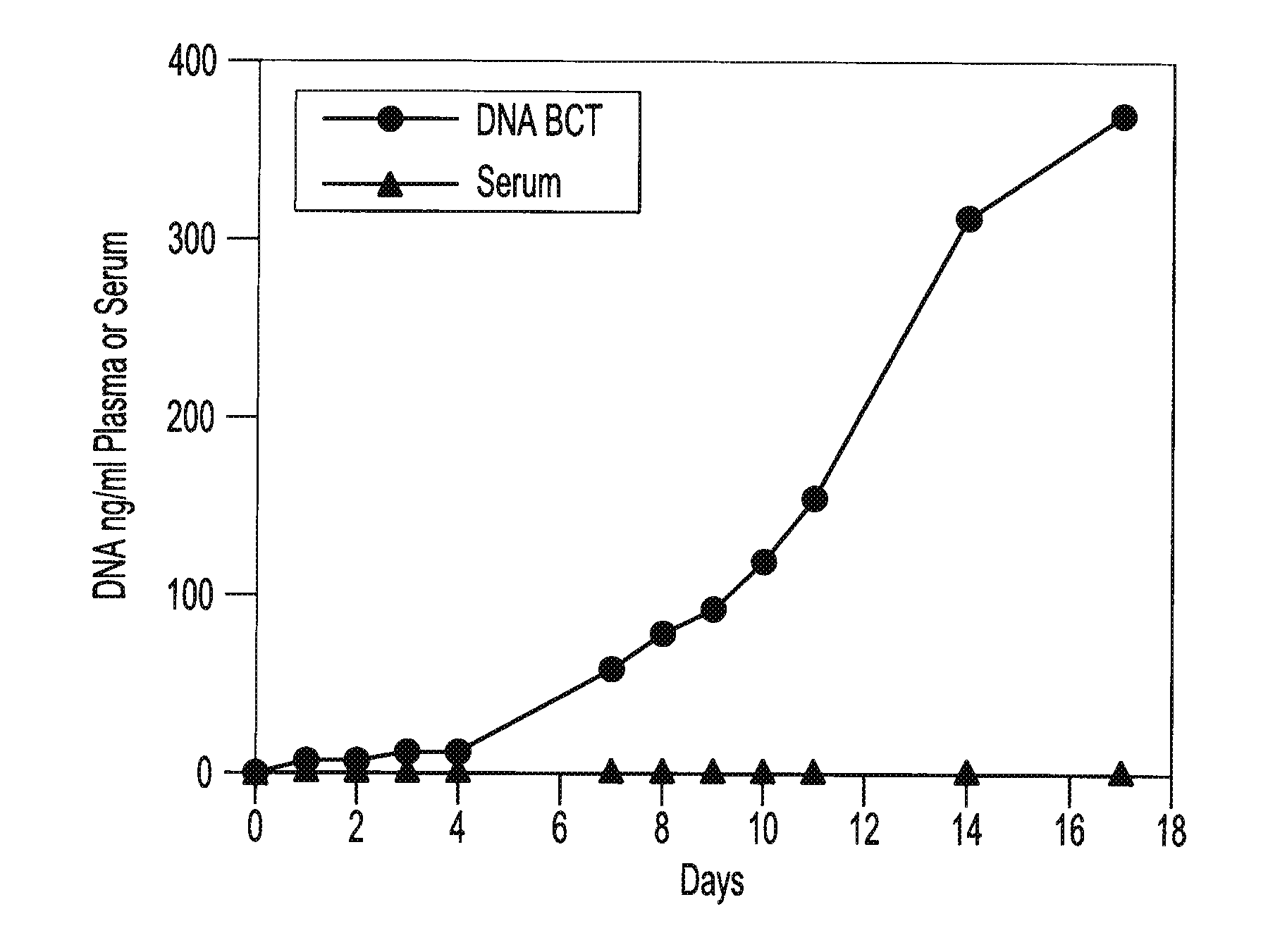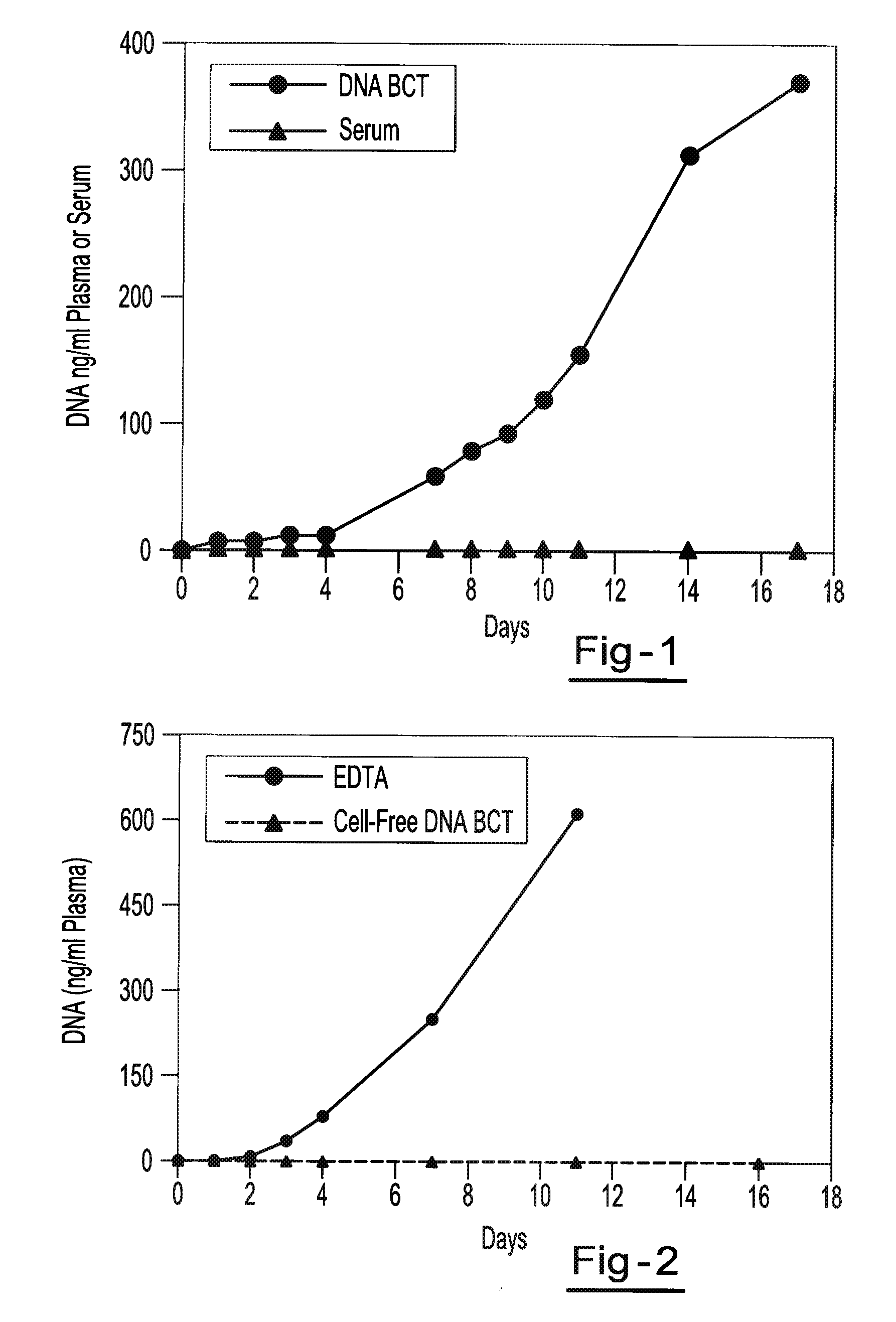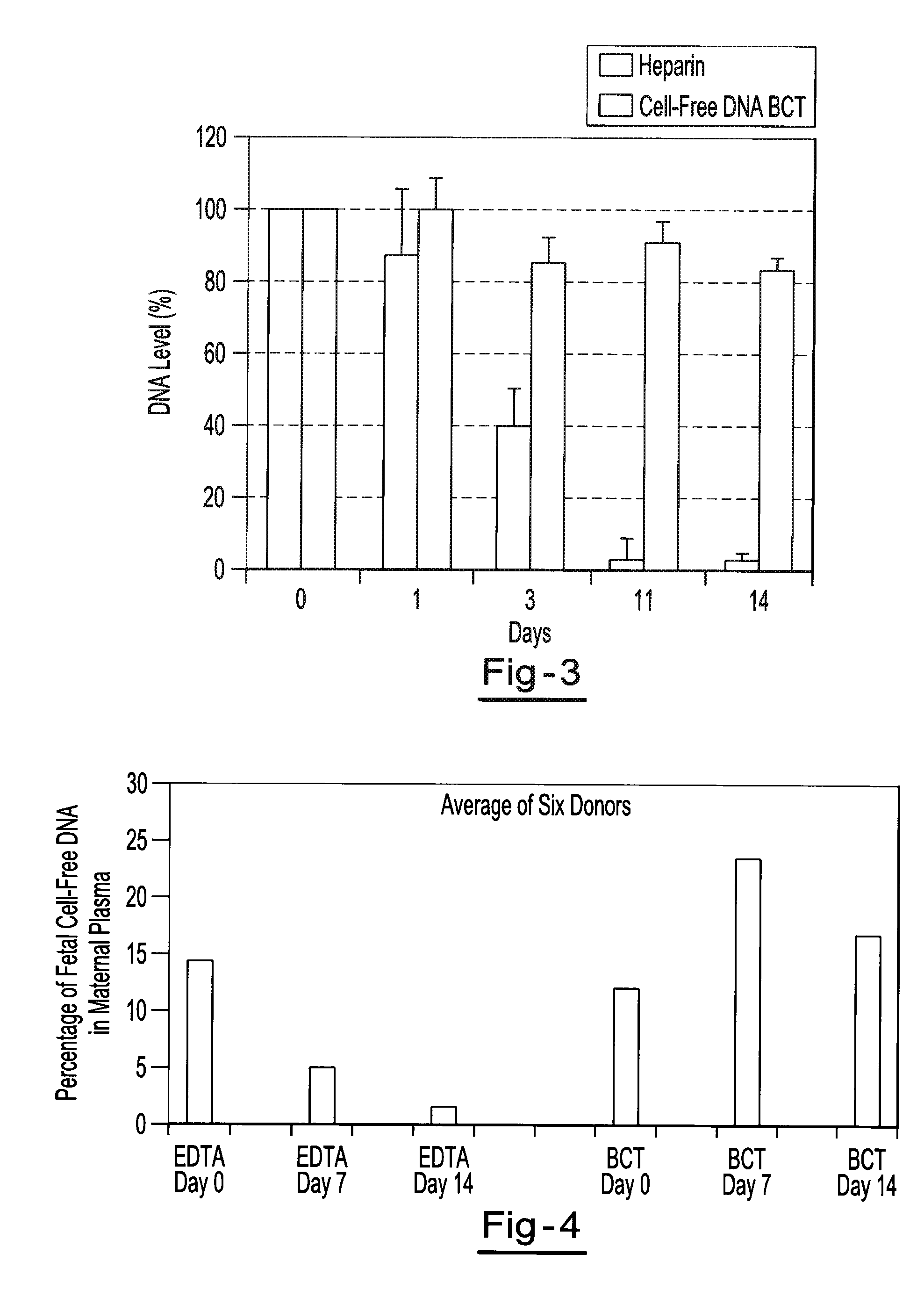Preservation of fetal nucleic acids in maternal plasma
a technology plasma, which is applied in the field of prenatal diagnosis of fetal abnormalities, can solve the problems of affecting only children, a large number of testing barriers, and carrying a substantial potential risk of pregnancy complications, so as to maintain the structural integrity of fetal nucleic acids
- Summary
- Abstract
- Description
- Claims
- Application Information
AI Technical Summary
Benefits of technology
Problems solved by technology
Method used
Image
Examples
example 1
[0059]Blood samples are taken from a female donor and a male donor. The female blood sample is transferred into two tubes, tube A containing about 500 g / L IDU, about 80 g / L Tripotassium EDTA, and about 50 g / L glycine and tube B containing only the Tripotassium EDTA. Both tubes are stored at room temperature. White blood cells from the male blood sample are isolated and spiked into both tube A and tube B. 3 ml of blood are taken from each tube on day 0, day 1, day 2, day 3, day 4, day 7 and day 11. Each sample is centrifuged at room temperature at 800 g for 10 minutes and the upper plasma layer is transferred to a new tube and further centrifuged at 1500 g at room temperature for 10 minutes. The free circulating DNA in each tube is then purified using the NucleoSpin® Plasma XS kit available from Macherey-Nagel Inc., Bethlehem, Pa. The samples are then amplified by Real Time PCR amplification of a fragment of the Y-chromosome (using iQ SYBR Green Supermix reagents available from BIO-R...
example 2
[0060]Blood samples from the same donor are drawn into two different types of blood collection tubes. One tube contains 500 g / L IDU, 81 g / L Tripotassium EDTA and 47 g / L glycine. The other tube contains only Heparin. All samples are centrifuged at 2100 g for 30 minutes at room temperature to separate the plasma. The plasma is then transferred to new tubes and non-human (lambda) DNA is then spiked into the plasma tubes. The spiked samples are then stored at room temperature for 0, 1, 2, 3, 4, 7, 11, and 14 days. Free circulating DNA is purified using the QIAamp® DNA Blood Mini Kit available from QIAGEN Inc. (Valencia, Calif.). DNA is extracted from each plasma sample. The samples are then amplified by Quantitative PCR (using iQ SYBR Green Supermix reagents available from BIO-RAD Laboratories (Hercules, Calif.)) to identify the amount of lambda DNA present. Results show a consistent relative percentage of lambda DNA presence at each measurement, indicating little if any decline in the ...
example 3
[0061]Two maternal blood samples from the same donor are drawn into two separate blood collection tubes. One tube contains about 500 g / L IDU, about 80 g / L Tripotassium EDTA, and about 50 g / L glycine. The other tube contains only the Tripotassium EDTA. Both tubes are stored at room temperature and 1 ml aliquots of blood are removed from each tube on day 0, day 7, and day 14 and plasma is separated. All samples are centrifuged at 800 g for 10 minutes at room temperature to separate the plasma. The plasma is then transferred into new tubes and centrifuged at 1500 g for 10 minutes at room temperature. Free circulating DNA is purified using the NucleoSpin® Plasma XS kit available from Macherey-Nagel Inc., Bethlehem, Pa. DNA is extracted from each plasma sample and eluted in 60 μl of elution buffer. An amount of 32 μl of eluted DNA is digested with 40 U of BstU 1 enzyme at 60° for 6 hours. The samples are then amplified by Real Time PCR (using TaqMan® RT PCR reagents available from Applie...
PUM
| Property | Measurement | Unit |
|---|---|---|
| Temperature | aaaaa | aaaaa |
| Temperature | aaaaa | aaaaa |
| Fraction | aaaaa | aaaaa |
Abstract
Description
Claims
Application Information
 Login to View More
Login to View More - R&D
- Intellectual Property
- Life Sciences
- Materials
- Tech Scout
- Unparalleled Data Quality
- Higher Quality Content
- 60% Fewer Hallucinations
Browse by: Latest US Patents, China's latest patents, Technical Efficacy Thesaurus, Application Domain, Technology Topic, Popular Technical Reports.
© 2025 PatSnap. All rights reserved.Legal|Privacy policy|Modern Slavery Act Transparency Statement|Sitemap|About US| Contact US: help@patsnap.com



